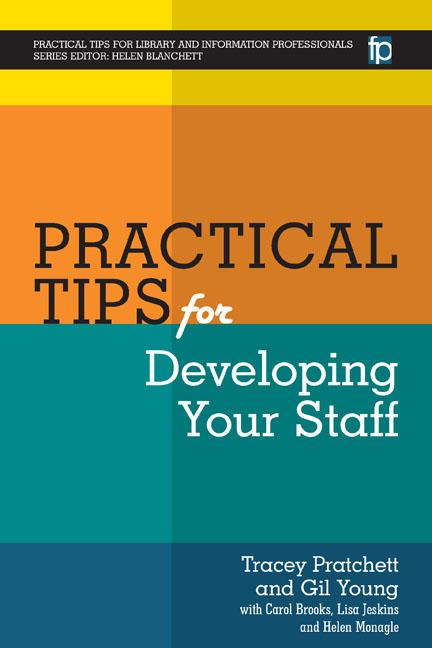Book contents
- Frontmatter
- Contents
- List of figures and tables
- Acknowledgements
- The authors
- List of abbreviations
- Series Editor's introduction
- Introduction
- Section 1 Theories
- Section 2 Infrastructure
- 11 Why develop staff?
- 12 Workforce planning
- 13 Job descriptions
- 14 Person specifications
- 15 Advertisements
- 16 Shortlisting
- 17 Interviews
- 18 Interviews – presentations and tests
- 19 Interviews – feedback
- 20 Inductions
- 21 Managing performance
- 22 Team development plans
- 23 Appraisals – preparing
- 24 Appraisals – conducting
- 25 Setting objectives
- 26 One-to-ones
- 27 Feedback – general
- 28 Team building
- 29 Team meetings
- 30 Sharing learning with the team
- 31 Writing references
- 32 Exit interviews
- 33 Effective handover
- Section 3 Activities and tools
- Index
23 - Appraisals – preparing
from Section 2 - Infrastructure
Published online by Cambridge University Press: 09 June 2018
- Frontmatter
- Contents
- List of figures and tables
- Acknowledgements
- The authors
- List of abbreviations
- Series Editor's introduction
- Introduction
- Section 1 Theories
- Section 2 Infrastructure
- 11 Why develop staff?
- 12 Workforce planning
- 13 Job descriptions
- 14 Person specifications
- 15 Advertisements
- 16 Shortlisting
- 17 Interviews
- 18 Interviews – presentations and tests
- 19 Interviews – feedback
- 20 Inductions
- 21 Managing performance
- 22 Team development plans
- 23 Appraisals – preparing
- 24 Appraisals – conducting
- 25 Setting objectives
- 26 One-to-ones
- 27 Feedback – general
- 28 Team building
- 29 Team meetings
- 30 Sharing learning with the team
- 31 Writing references
- 32 Exit interviews
- 33 Effective handover
- Section 3 Activities and tools
- Index
Summary
CIPD (2015) DESCRIBES performance appraisals (or performance reviews) as an opportunity for an employee and their line manager to discuss their performance, future goals, development needs and to identify any resources or training which they need. Typically, the appraisal is an annual event, although some organizations may undertake these more regularly. It usually ends with both parties agreeing a number of personal objectives for the coming year which are linked to both departmental and organizational core objectives. The appraisal provides an opportunity to bring together organizational, LKS and individual aims into one place and the meeting should be a two-way conversation between the employee and their line manager.
To ensure that both parties get the most out of an appraisal meeting, it is essential that both the individual employee and their line manager prepare in advance. Here are a number of tips which can help your meeting to run smoothly:
• Agree a date and a time that is mutually beneficial allowing enough time to prepare.
• Book a room that is comfortable and suitable for both of you. Your office may be the easiest place to meet, but may be intimidating for the appraisee. You could meet in a coffee shop or somewhere more informal, but ensure that you can maintain confidentiality.
• Ensure that the individual understands the process and that they have a copy of last year's appraisal and the new documentation.
• Read last year's appraisal documentation and complete the documentation for the coming year:
—how do you rate their performance?
—have they fulfilled last year's objectives?
—if not, do you know why?
• Review the job description. Are they fulfilling the requirements of their job description and does it still represent their role?
• Ensure that you have a good understanding of your organizational mission, values and goals so that you can link these to the appraisal process.
• Prior to the meeting identify those key objectives which are clearly linked to your LKS's overall plan. These may change during the meeting, but it is good to have a clear idea beforehand of what you would like the team member to achieve in the coming year.
- Type
- Chapter
- Information
- Practical Tips for Developing Your Staff , pp. 54 - 56Publisher: FacetPrint publication year: 2016

